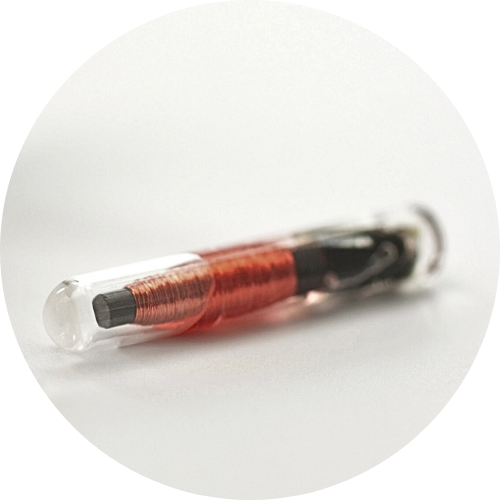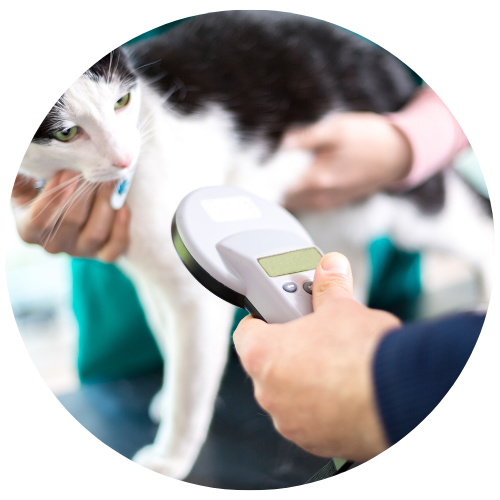Microchipping
To help keep you and your pet together, no matter what.
What is a microchip?
A microchip is a tiny implant, about the size of a grain of rice. Each microchip has a unique number, which can be read by a microchip reader.
Authorised professionals can use this to find the owner’s details.
As long as the owner’s details have been correctly registered with a DEFRA-approved microchip database, and kept up-to-date, a microchip can be used to identify a pet and re-unite them with their owner if they are ever lost or stolen.
Microchipping by 8 weeks is a legal requirement for all dogs. Failure to have a microchip registered on a DEFRA-approved database can incur a fine of up to £500.
As of June 2024, it will be law for all cats to be microchipped by 20 weeks of age.
Does my pet need a microchip?
How is a microchip placed in my pet?
The microchip is placed under the skin, approximately between your pet’s shoulderblades, using a needle.
This can be done during a routine consult, and does not require sedation or a general anaesthetic.
Will a microchip harm my pet?
The needle used to insert a microchip is thicker than the needles our vets use for vaccinating your pet, as the implant has to fit inside it.
Because the needle is thicker, your pet may feel a painful pinch at the time of the insertion, but no more so than when receiving a vaccination.
We like to distract pets with something delicious at the time, to keep their mind off it!
What if my pet goes missing?
If a missing pet is brought to any veterinary practice, or other authorised professional, the first thing we will do is scan them for a microchip.
If the details on the microchip are all accurate, we can then contact the owner to let them know we have their pet waiting for them!
Some microchip databases will also allow the owner to “flag” a microchip as belonging to a missing or stolen pet.
How do I update my pet’s microchip details?
If your pet got their microchip implanted before you adopted them, the microchip details might not be in your name. The microchip may not have any owner details associated with it at all.
If you have any paperwork from the breeder or organisation you got your pet from, this might contain details about your pet’s microchip status.
change your pet’s microchip details
To update your pet’s microchip details (if you move house or change telephone number, or if the pet doesn’t have the right information associated with it), you will need to:
1.
Find out your pet’s microchip number
This may be listed in any documents you received from a breeder or rescue organisation. Your vet may also have given you a card or sticker with your pet’s microchip number when they implanted it.
You can ask your local vet clinic to check your pet’s microchip with a microchip scanner, and tell you the number.
2.
Find out which database your pet’s chip is registered with
You can find this out by putting your pet’s microchip number into Check A Chip
3.
follow the instructions on the database
There will typically be a heading or button titled “transfer of ownership” or “update details”. You should also be able to log in and see what your pet’s current microchip details are.









